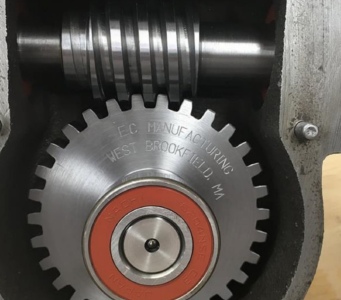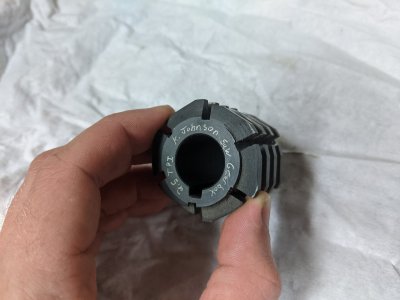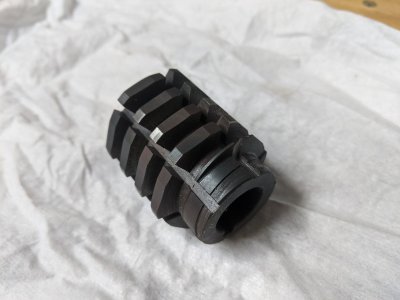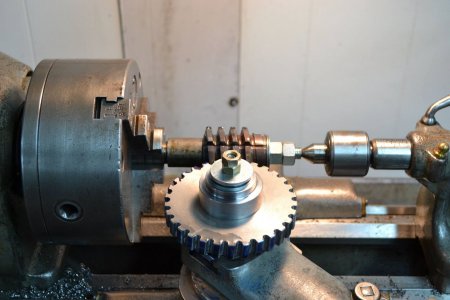When you do it that way, it's make shift, so you expect some fiddling and some mixed results right from the start.
I see multiple geometrical descrepencies between the cutting edges of the tap (and their lack of clearances) and the variable diameter/radius of the part. The deeper parts of the thread are on a smaller diameter than the outer most parts. That's part of the magic that makes hobbing work to make anything fit right, but it also is getting kinda deep, with a big sidewall on the thread, and I think that is interfering with his cutting. On a "standard" thread, these issues would be a much smaller percentage, and probably a lot easier to bury as the cut reaches full depth.
I've only done this with half inch 13 threads, and my results were.... well.... It looked good from across the room, but if you studied it up close you could see that it wasn't cutting right, and given the cutting geometry of the tap's individual cutting tips, I think it just couldn't decide which part of the engaged cutting area(s) to follow. Pretty much exactly what I see here in the video, except like I say, the scaling is quite different.
I suspect the process could work, but I think to do it you'd need a dedicated hob to make a worm wheel like that. The pattern is just too deep to do it that way.
Or on the other hand, I could be smoking crack again. I'm curious what other's say. I'd kinda like to be able to make a worm and wheel on demand.....





